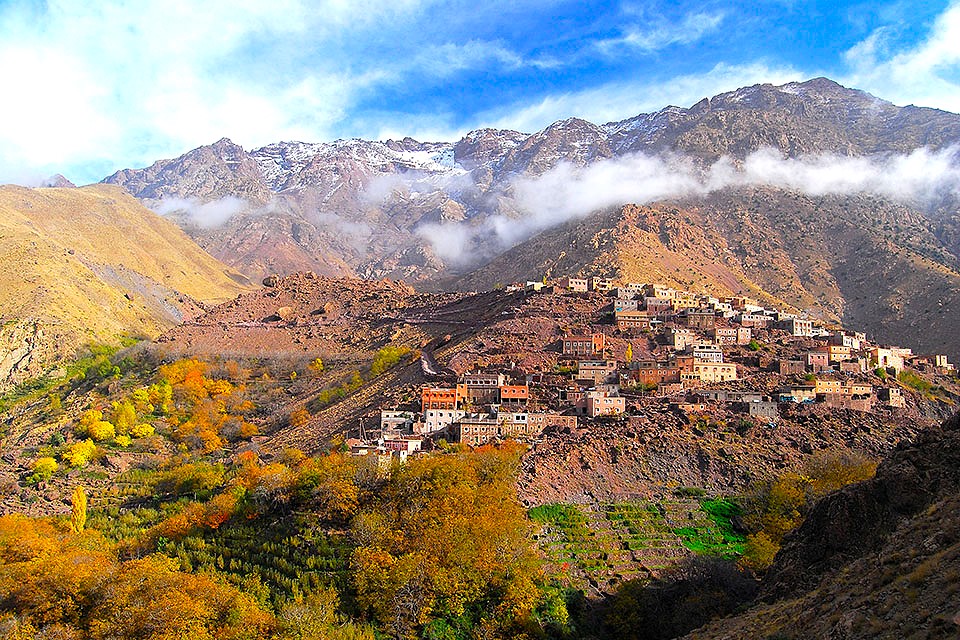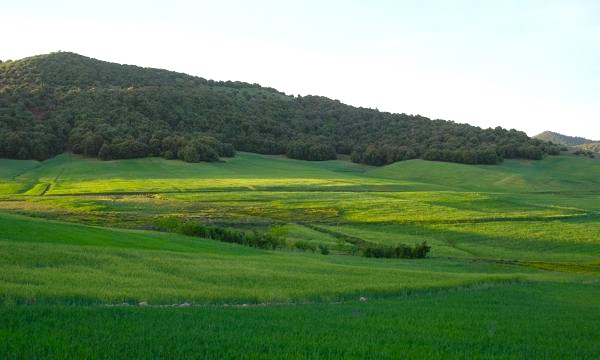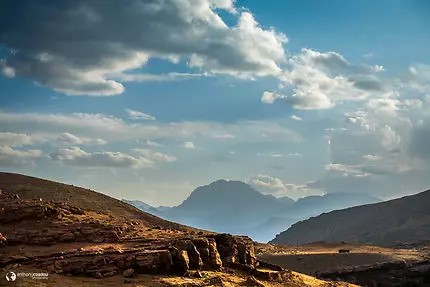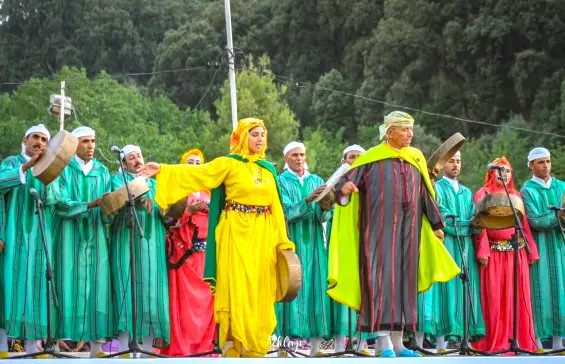
The Atlas Mountains of Morocco: Where Nature, Culture, and Adventure Meet
Stretching majestically across Morocco, the Atlas Mountains form the country’s rugged backbone, a realm of snow-capped peaks, hidden valleys, and ancient villages where time seems to stand still. From the icy summits of Jebel Toubkal, North Africa’s highest mountain, to the ochre canyons of the Anti-Atlas, this sweeping mountain chain defines Morocco’s landscape and spirit.
Travelers who venture here find more than dramatic scenery; they encounter a living culture rooted in resilience. The Amazigh (Berber) people, who have inhabited these highlands for centuries, carry forward traditions of hospitality, craftsmanship, and harmony with nature. Whether hiking through cedar forests, exploring ancient kasbahs, or sharing mint tea in a remote mountain village, the Atlas reveals Morocco’s most authentic and unspoiled heart.
To experience the mountains firsthand, visitors often begin their journey from Marrakech or Ouarzazate, gateways to valleys and trails that lead deep into the highlands. From there, every path tells a story, one of earth, culture, and endurance.
Geography and the Three Ranges of the Atlas Mountains
The Atlas Mountains stretch for over 2,500 kilometers across Morocco, Algeria, and Tunisia, acting as a natural barrier between the Sahara Desert and the fertile plains of the Atlantic and Mediterranean coasts. In Morocco, this mighty range divides into three distinct sections, each with its own character, landscapes, and traditions: the High Atlas, the Middle Atlas, and the Anti-Atlas.
These ranges are not just geographic zones; they are living worlds shaped by altitude, climate, and culture, home to Amazigh villages, snow-fed rivers, and centuries-old trails once crossed by traders and nomads.
The High Atlas – The Roof of North Africa
The High Atlas range is Morocco’s most dramatic region, running diagonally across the country from the Atlantic coast near Agadir to the northeast near Taza. It’s home to the towering Jebel Toubkal, which rises 4,167 meters above sea level, the highest peak in North Africa.
In the foothills, travelers find terraced valleys, deep gorges, and fertile oases sustained by ancient irrigation systems. The Ourika Valley, Aït Bouguemez (Happy Valley), and Toubkal National Park are popular hiking destinations, showcasing breathtaking alpine beauty and authentic Amazigh hospitality.
Local villages, built from red clay and stone, blend harmoniously with the landscape, timeless examples of sustainable mountain architecture.

The Middle Atlas – The Land of Forests and Lakes
The Middle Atlas lies north of the High Atlas, forming a lush, cooler region famous for its cedar forests, crystal lakes, and rolling green plateaus. It’s often called the “Switzerland of Morocco” for its mild climate and scenic landscapes.
This range is home to the Cedar Forest of Azrou, where the rare Barbary macaques roam freely, and to charming towns like Ifrane, built in a European style that surprises many travelers. The region’s rivers and springs feed into the Oum Er-Rbia River, one of Morocco’s most vital waterways.
For travelers seeking tranquility, the Middle Atlas offers opportunities for nature walks, birdwatching, and encounters with Morocco’s lesser-known mountain life.

The Anti-Atlas – Where Mountains Meet the Desert
The Anti-Atlas lies to the south, forming the bridge between the mountains and the vast Sahara Desert. Unlike the lofty peaks of the High Atlas, the Anti-Atlas is characterized by rugged rock formations, ancient fortresses, and desert oases where Amazigh traditions remain deeply rooted.
Towns like Tafraoute and Tata are cultural gems, surrounded by surreal pink granite boulders and palm groves. The Jebel Sirwa and Jebel Saghro massifs offer spectacular trekking routes through remote, untamed landscapes, a paradise for those who love solitude and off-the-beaten-path exploration.

Did you know?
Parts of the High Atlas Mountains are recognized by UNESCO for their unique cultural and natural heritage, particularly for how local communities maintain traditional farming methods in harmony with mountain ecosystems.
Life and Culture in the Atlas Mountains – The Amazigh Heartland
Amid the winding valleys and misty peaks of the Atlas Mountains lives the Amazigh people, Morocco’s Indigenous inhabitants and the guardians of its highland traditions. Their presence here dates back thousands of years, long before Arab dynasties and European explorers arrived. Today, their villages and customs continue to define the rhythm of life across the mountains.
Stone houses built from local clay cling to steep slopes, surrounded by terraced fields of barley, walnuts, and almonds. Life is shaped by the seasons: spring brings the bloom of wildflowers and agricultural festivals, while winter turns the peaks white with snow, often isolating remote villages for weeks. In these moments, community becomes everything — families gather around open hearths, sharing mint tea, bread baked in communal ovens, and stories passed down through generations.
Traditions and Craftsmanship
The Amazigh people have preserved a deep connection with their land through craftsmanship and oral culture.
Women in the Atlas Mountains are the keepers of ancestral arts, weaving vibrant carpets and kilims that tell stories through color and geometric symbols. Each pattern carries meaning: protection, fertility, and harmony with nature. These textiles have earned admiration worldwide for their authenticity and artistry, representing centuries of unbroken cultural continuity.
In mountain souks, travelers can still find handwoven rugs, clay pottery, and silver jewelry crafted in traditional styles. These crafts are not only sources of income but also expressions of Amazigh identity and pride. According to UNESCO, Morocco’s rich intangible heritage, including music, craftsmanship, and oral traditions, plays a vital role in preserving the country’s cultural diversity.

Music, Rituals, and Mountain Festivals
Music and dance are woven into daily life in the Atlas. The rhythmic beats of Ahouach, Ahidous, a communal Amazigh dance performed in a circle, echo during village celebrations, weddings, and harvest festivals. Accompanied by hand drums and chants, these performances express unity, strength, and joy.
Each region also hosts its own moussem, or local festival, blending religious devotion with communal festivity. These gatherings are where people trade goods, celebrate their saints, and renew social ties.
For travelers, attending a mountain moussem offers a rare glimpse into Morocco’s living traditions — far from the tourist circuits and deeply rooted in the people’s connection to the land.

Adventure and Exploration – Trekking Through the Atlas Mountains
For travelers seeking both thrills and serenity, the Atlas Mountains offer some of Morocco’s most unforgettable adventures. From gentle valley hikes to multi-day expeditions over rugged peaks, the mountains cater to every level of explorer, blending natural beauty with cultural encounters.
High Atlas Trekking – Peaks and Valleys
The High Atlas is Morocco’s premier trekking destination. The most famous route leads to Jebel Toubkal, the tallest peak in North Africa at 4,167 meters. Trekkers often start from Imlil Valley, where traditional Amazigh villages serve as bases for acclimatization and rest.
Along the way, hikers pass cedar forests, alpine meadows, and terraced farmland, encountering Amazigh shepherds and their flocks. Multi-day treks often include overnight stays in mountain refuges or local guesthouses, providing authentic immersion in highland life. The changing landscapes, from rocky slopes to lush valleys, make each step a visual delight and a cultural journey.
Middle Atlas Adventures – Forests and Lakes
The Middle Atlas is ideal for travelers seeking less strenuous but equally rewarding excursions. The region’s cedar forests, such as the Azrou Forest, are home to the endangered Barbary macaque and provide cool, shaded trails perfect for walking or cycling.
Crystal-clear lakes, including Lake Aguelmame Sidi Ali, offer opportunities for picnics, birdwatching, and photography. Seasonal highlights include autumn foliage in the oak forests and winter snow-covered trails that transform the Middle Atlas into a quiet wonderland.
Anti-Atlas Adventures – Desert Meets Mountains
The Anti-Atlas region combines trekking with desert exploration. Routes around Jebel Saghro and Tafraoute feature dramatic rock formations, deep gorges, and sparse settlements, creating an otherworldly experience for those seeking solitude and adventure.
The Anti-Atlas is less crowded than the High Atlas, offering off-the-beaten-path treks, guided tours by local Amazigh guides, and opportunities to learn about ancient rock art and desert agriculture. Travelers can also combine trekking with camel excursions toward the edges of the Sahara for a seamless mountain-to-desert adventure.
Travel Tips – How to Explore the Atlas Mountains Safely and Respectfully
Exploring the Atlas Mountains is a transformative experience, but it requires preparation and cultural sensitivity. Whether you’re trekking the High Atlas, exploring Middle Atlas forests, or venturing into the remote Anti-Atlas, these tips will help you enjoy your journey responsibly.
Planning Your Trek
-
Choose your route wisely: High Atlas treks, like Jebel Toubkal, can take 2–4 days; Middle Atlas trails are shorter and more accessible. Anti-Atlas routes are often remote and require local guidance.
-
Hire local guides: Beyond safety, guides provide cultural context, storytelling, and support for local communities.
-
Acclimate gradually: High altitudes can cause altitude sickness; spend a day or two in foothill villages before ascending higher.
Respect Local Culture
-
Dress modestly in villages; women may prefer long skirts and covered shoulders, while men should avoid sleeveless shirts.
-
Ask before photographing people — many Amazigh communities value privacy.
-
Support local businesses: Stay in guesthouses, buy crafts directly from artisans, and hire local guides.
Safety and Equipment
-
Pack layered clothing: Mountain weather is unpredictable; mornings can be freezing, afternoons warm.
-
Footwear: Sturdy trekking boots are essential, especially on rocky High Atlas trails.
-
Water and food: Carry enough water, snacks, and a basic first-aid kit.
-
Navigation: Maps, GPS, or guides are recommended — some trails are poorly marked.
Responsible Tourism
-
Leave no trace: dispose of waste properly and avoid disturbing wildlife.
-
Respect sacred sites: many mountain villages host religious shrines and rituals.
-
Contribute positively: opting for local accommodations, guided tours, and handicrafts helps sustain the Amazigh economy.
Why the Atlas Mountains Should Be on Every Traveler’s Morocco Itinerary
From the snow-capped peaks of the High Atlas to the lush forests of the Middle Atlas and the rugged Anti-Atlas landscapes, the Atlas Mountains offer a unique combination of natural beauty, cultural richness, and adventure.
Travelers can immerse themselves in the Amazigh way of life, witness centuries-old traditions, and trek through some of North Africa’s most breathtaking landscapes. Whether it’s the thrill of summiting Jebel Toubkal, wandering serene cedar forests, or discovering remote desert oases, the Atlas Mountains create unforgettable memories and a deep connection to Morocco’s heart and soul.
Exploring these mountains isn’t just about sightseeing, it’s about experiencing a living culture, supporting local communities, and respecting the delicate mountain environment. Every step in the Atlas Mountains tells a story of resilience, tradition, and timeless beauty, making it a must-visit destination for international travelers seeking authenticity and adventure.
If you’re ready to plan your visit, the team at Morocco Travel Road can assist with guided tours, accommodations, and tailored itineraries, ensuring a smooth and memorable excursion.
Book your Atlas Mountains adventure today !
Contact us and experience one of Morocco’s most spectacular natural wonders.
